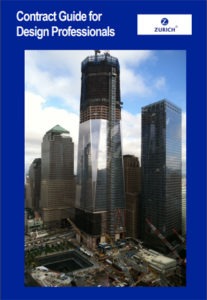Those of you who are interested in design-build have undoubtedly come across Design-Build Lessons Learned, an annual publication authored by Mike Loulakis, the president of the law firm of Wickwire Gavin and one of the country’s foremost authorities on design-build. Mike first started publishing Design-Build Lessons Learned in 1995 as a newsletter designed to give his clients an opportunity to understand the nuances of this new area of law. The first edition of the publication only covered ten cases, which represented the universe of 1995 court decisions addressing design-build disputes. Ten years later, after unprecedented growth in both public and private sector use of the design-build process, Mike has now reported on a total of 304 cases, almost half of which have come during the 2002-2004 time period. Design-Build Lessons Learned has also become much more substantial in appearance, as it moved from newsletter format to paperback book format in 2001.(240 pages, US$60.00).
As an avid reader of this publication, I strongly believe that the industry needs caselaw to help explain design-build legal theories and precedent. Over the past few years, Design-Build Lessons Learned has regularly highlighted 20-30 important design-build cases around the country. While this gives design-build practitioners insight into the mistakes of others, it also affords them the opportunity to fashion best practices from these cases.
The 2004 edition of Design-Build Lessons Learned is a 240-page paperback book that contains an array of significant design-build cases among its 58 reported decisions. Although it is very difficult to identify the “best of the best,” special attention should be paid to the following seven cases:
§ Lockheed Martin Idaho Technologies Co. v. EG&G Idaho Inc., where an Idaho federal court rejected a turnkey contractor’s excuses for failing to meet the contract’s performance guarantees. Particularly noteworthy was the court’s conclusion that millions of dollars of cost overruns were not sufficient to establish a “commercial impracticability” defense to performance.
§ Record Steel and Construction v. United States , where the United States Court of Federal Claims concluded that the design-builder was entitled to a change order when the government required it to use a “recommended” geotechnical approach instead of what the design-builder wanted to use.
§ PDC-El Paso Meriden, LLC v. Alstom Power, Inc., where a Massachusetts state court concluded that an owner and an EPC contractor needed much more than a Letter of Intent to create a binding commitment to construct a power plant.
§ Siemens Westinghouse Power Corp. v. Dick Corp., where a New York federal court refused to find that one member of a design-build consortium could claim that it was “duped” by its partner.
§ Metropolitan Steel Industries, Inc. v. Perini Corp., where a New York state court considered a series of claims arising from construction of a New York City Transit Authority bus terminal. Particularly noteworthy about this case is the guidance it provides relative to the potential liability of a subconsultant engineer to the prime design-builder, reaching a different result than what we have seen from other cases around the country.
§ O’Brien & Gere Technical Services, Inc. v. Fru-Con Construction Corp./Fluor Daniel, Inc., where the 8th Circuit Court of Appeals concluded that a design-build contract was abandoned because of, among other things, poor change order management and a failure of the parties to ever reach agreement on a design baseline.
§ American Family Mutual Insurance Company v. American Girl, Inc., where the Wisconsin Supreme Court finally ended a multi-year piece of litigation by concluding that a design-builder’s CGL insurance policy covered the damages incurred when a building failed because of negligence by the design-builder’s geotechnical contractor.
For an extensive excerpt of one of the cases taken directly from the publication, see the next article in this issue of the ConstructionRisk.com Report.
About the author: Article written by J. Kent Holland, Jr., a construction lawyer located in Tysons Corner, Virginia, with a national practice (formerly with Wickwire Gavin, P.C. and now with Construction Risk Counsel, PLLC) representing design professionals, contractors and project owners. He is founder and president of a consulting firm, ConstructionRisk, LLC, providing consulting services to owners, design professionals, contractors and attorneys on construction projects. He is publisher of ConstructionRisk.com Report and may be reached at Kent@ConstructionRisk.com or by calling 703-623-1932. This article is published in ConstructionRisk.com Report, Vol. 7, No. 8 (Dec 2005).
Copyright 2005, ConstructionRIsk.com, LLC


Connect